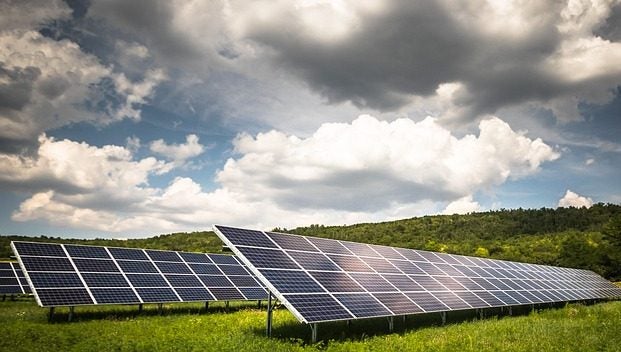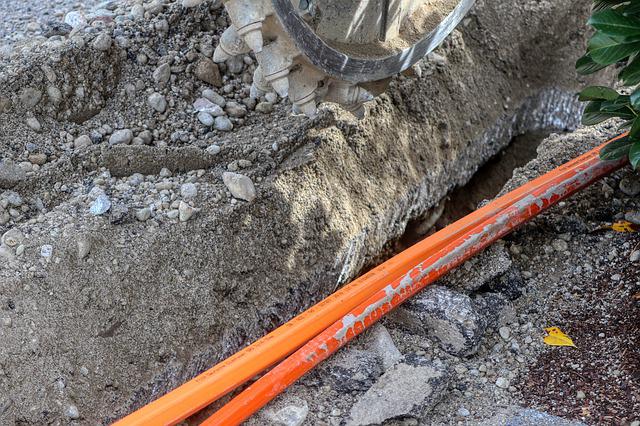Mountain Pine Solar: Here’s what we know right now
Published 10:19 am Wednesday, January 17, 2024
|
Getting your Trinity Audio player ready...
|
There’s a big difference between a solar farm and a power plant. That’s what would-be neighbors of the proposed Mountain Pine Solar LLC project want people, and especially Buckingham County supervisors, to know.
The piece in question would be on Ranson Road, and would cover 1,065 acres located both north and south of Blinkys Road, where Bear Garden Creek crosses under the road. On the one hand, it could ultimately power nearly 13,000 homes in the region for the next 40 years, while also providing revenue for the county. On the other, as some residents point out, it could damage the environment, while the plan to handle replacement and deteriorating panels seems unclear. Also, instead of a small solar farm, you would have what appears to be almost an industrial sized power plant around the neighborhood.
But, whatever is done, Laura Luniewski insists no one should be calling Mountain Pine Solar a “farm.”
“We do not oppose solar, but this is not a farm. It’s a power plant,” said Luniewski, whose parents — Warren and Diane Whitworth — own a farm that borders the project. “The industrialization of real farms and timberland is not green.”
Other residents asked supervisors to consider long-term effects, not just short-term tax revenue.
“You have succumbed to industry pressure and chosen large industrial projects,” Heidi Berthoud said. “The money upfront looks good but you have not looked carefully at the long-term cost benefit values of these projects, let alone the unaccounted for costs of extensive ecological problems.”
Beyond that, some adjourning property owners say they haven’t even heard from the company.
“Hudson Energy said they’ve talked to a lot of the adjoining landowners, (but) I haven’t seen anyone,” said Ed Flippen. “We own almost a mile of the property down that side. No one has come to see us.”
More about Mountain Pine Solar
The panels, according to a plan submitted by Hodson Energy, would be situated in what is primarily a flat area of the site, leaving about a third of the acreage untouched. It would also emit as much glare as sun reflecting off the water, since the photovoltaic cells are designed to absorb as much of the light as possible.
The company says it would be nearly impossible for neighboring properties to see the panels, since none would be closer than 75 feet to any property line, or 300 feet to any structure.
“This should provide a substantial visual buffer from any neighboring properties,” Hodson said in its initial presentation, “ensuring that nearby residents continue to enjoy their rural quality of life.”
The company points out there could be a problem near C.G. Woodson Road.
“There is currently a cornfield planted that will transition into a tree buffer to ensure that the site is uniformly buffered with trees,” according to the Hodson report.
The project’s construction also could significantly impact nearby Bear Garden Creek. While the solar panels themselves do not create pollutants, soil erosion caused by the necessary land clearing to install the panels could increase sediment runoff. Too much sediment seeping into nearby waterways could disrupt the ecosystem — hurting the animals and plants that depend on it — as well as potentially damage drinking water treatment systems, according to Popular Science.
The Environmental Protection Agency even charged four solar farm projects in Alabama, Idaho and Illinois with violating the federal Clean Water Act in 2022 because they didn’t control soil erosion.
Sloping toward Bear Garden Creek
“In the proposal, the developer states that the site is ‘relatively flat,’” Luniewski said. “That’s false. The proposed site is heavily sloped toward Bear Garden Creek, which is the property border. This creek runs through the entire site, and feeds directly into the James River about a mile away.”
Hodson, however, says it’s well aware of potential dangers to the waterways, and has already planned a 100-foot buffer between the solar project and any wetlands on the site.
On top of that, any special use permit issued by the county would require Hodson to complete and submit an erosion and sediment plan approved by the Soil and Water Conservation District. Hodson also would have to submit a stormwater management plan to the Virginia Department of Environmental Quality.
If all goes as planned, Hodson would finalize all of its state-level approvals for the Arvonia Solar Project by next year, and be ready to start construction in 2027. It’s expected to go online in 2028.
Construction would create 18 jobs paying an average wage of $50,000 each, and pump nearly $12 million into the local economy, according to a study Hodson commissioned by Magnum Economics. Once in operation, the report says the project would be expected to generate another $8.5 million in revenue for Buckingham County over the next 40 years.
Up next for Mountain Pine Solar?
Still, the Buckingham County Board of Supervisors have set aside Monday, Feb. 12 at 6 p.m., for the public hearing. The motion to move the project to a February public hearing passed with Dennis Davis Jr., and Danny Allen dissenting.






